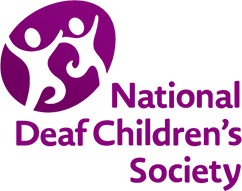What is sign language?
Sign language is a visual language that uses hand shapes, facial expression, gestures and body language. Sign languages have their own vocabulary, construction and grammar.
There are around 300 sign languages in the world. Like spoken languages, sign languages are natural, which means that they're developed over the years by the people who use them. In the UK, the term sign language usually refers to British Sign Language (BSL).
Sign languages are different to sign systems such as Sign Supported English, Signalong or Makaton, which may use BSL signs alongside spoken English but follow the structure of spoken English.
Why do families learn sign language?
There are lots of reasons why families decide to learn sign language. Sign language is especially useful for children who are severely or profoundly deaf and get little or no benefit from hearing technology. For these children, sign language is often their first language.
Some families choose to learn sign language because they want to give their children the opportunity to communicate in as many ways as possible. For example, lots of families of children who use cochlear implants learn sign language so that their child can choose whether they want to use speech or sign language in the future.
In fact, even families who don't have a deaf child might still decide to learn sign language with their hearing children, to support language development. Hand-eye coordination develops earlier than speech skills and many babies are able to use simple signs such as 'milk', 'eat', 'sleep', 'nappy' and 'teddy', before they are able to say these words.
Is sign language right for my child?
Many children are fitted with hearing technology such as hearing aids or cochlear implants soon after being identified as deaf, giving them the opportunity to develop spoken language. However, even if your child uses speech, learning sign language can help with understanding speech. It can also be particularly useful at times when a deaf child is not using hearing aids or cochlear implants such as:
- before their hearing aids or cochlear implants are fitted
- while they get used to wearing them (for example, younger children may take their hearing aids out to begin with)
- at times when their equipment isn't used such as bedtime, bathtime and when swimming
- if they have concentration fatigue and need some quiet time
- if their hearing aid or implant stops working and needs to be replaced.
Some deaf children naturally stop signing as their spoken language develops. However, for many deaf children, sign language will continue to be their preferred language or will still play an important role in their lives.
Learning sign language allows deaf children to communicate with other children who sign and enriches their experience and understanding of Deaf culture.
Will using sign language affect my child's speech?
Some people worry that using sign language will mean their child doesn't learn to speak, or learns to speak more slowly. In fact, learning sign language can help you to communicate with your child. As long as your child is exposed to good spoken language as well as sign language, there's no evidence that learning to sign will delay or stop them developing speech.
For detailed information about choosing a communication method for your child, visit our page Choosing an approach which has detailed information about the most popular approaches used by deaf children and their families.
